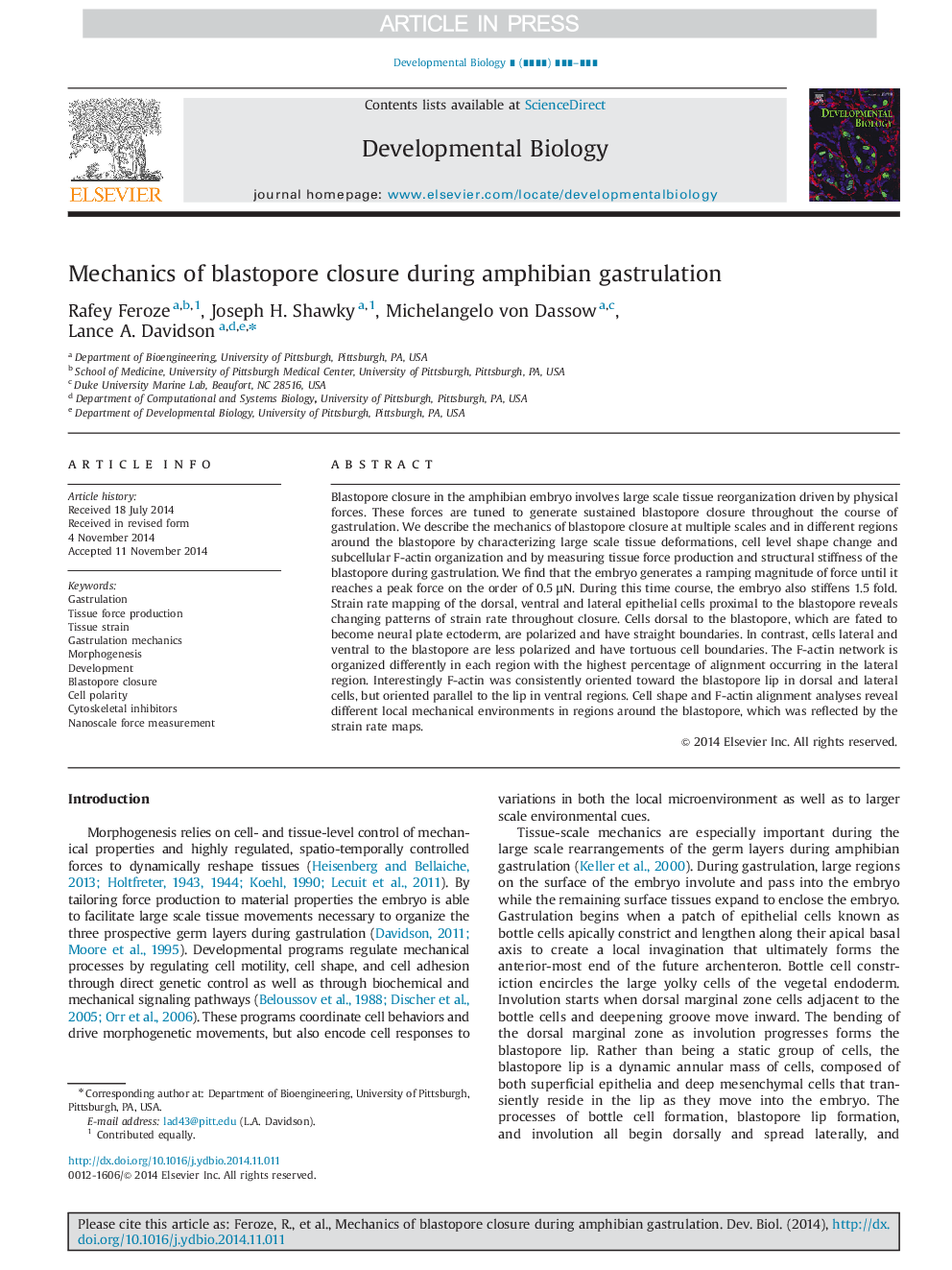| Article ID | Journal | Published Year | Pages | File Type |
|---|---|---|---|---|
| 10931538 | Developmental Biology | 2015 | 11 Pages |
Abstract
Blastopore closure in the amphibian embryo involves large scale tissue reorganization driven by physical forces. These forces are tuned to generate sustained blastopore closure throughout the course of gastrulation. We describe the mechanics of blastopore closure at multiple scales and in different regions around the blastopore by characterizing large scale tissue deformations, cell level shape change and subcellular F-actin organization and by measuring tissue force production and structural stiffness of the blastopore during gastrulation. We find that the embryo generates a ramping magnitude of force until it reaches a peak force on the order of 0.5 μN. During this time course, the embryo also stiffens 1.5 fold. Strain rate mapping of the dorsal, ventral and lateral epithelial cells proximal to the blastopore reveals changing patterns of strain rate throughout closure. Cells dorsal to the blastopore, which are fated to become neural plate ectoderm, are polarized and have straight boundaries. In contrast, cells lateral and ventral to the blastopore are less polarized and have tortuous cell boundaries. The F-actin network is organized differently in each region with the highest percentage of alignment occurring in the lateral region. Interestingly F-actin was consistently oriented toward the blastopore lip in dorsal and lateral cells, but oriented parallel to the lip in ventral regions. Cell shape and F-actin alignment analyses reveal different local mechanical environments in regions around the blastopore, which was reflected by the strain rate maps.
Related Topics
Life Sciences
Biochemistry, Genetics and Molecular Biology
Cell Biology
Authors
Rafey Feroze, Joseph H. Shawky, Michelangelo von Dassow, Lance A. Davidson,
